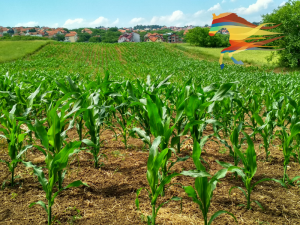

Through the Local Nature Recovery and Landscape Recovery schemes, the government is keen to encourage farmers to work together to benefit the environment. Defra has provided more detail on the second and third elements of the new Environmental Land Management or ELM scheme – the Local Nature Recovery Scheme and Landscape Recovery.
It follows the announcement late last year of the launch of the Sustainable Farming Incentive (SFI) in 2022. David Morley, head of conservation and environment for H&H Land & Estates, discusses what the government’s new announcement means for farmers.
“Both Landscape Recovery and Local Nature Recovery are exciting new schemes with the potential to help farmers and land managers deliver significant environmental benefits. However, the complexity and long-term nature of Landscape Recovery is likely to limit its interest to many land managers,” he explained.
“Farmers will need to see the detail of Local Nature Recovery in order to understand what they can do and how much they will be paid to do it before they can factor the new scheme into their business development plans.”
 The Local Nature Recovery (LNR) will succeed Countryside Stewardship – both Mid-Tier and Higher Tier – when launched in full in late 2024. Like Countryside Stewardship, the scheme will pay farmers to undertake a range of options that will meet a variety of environmental objectives. These include enhancing biodiversity, improving air and water quality, contributing to carbon net-zero targets and natural flood management, among others.
The Local Nature Recovery (LNR) will succeed Countryside Stewardship – both Mid-Tier and Higher Tier – when launched in full in late 2024. Like Countryside Stewardship, the scheme will pay farmers to undertake a range of options that will meet a variety of environmental objectives. These include enhancing biodiversity, improving air and water quality, contributing to carbon net-zero targets and natural flood management, among others.
Mr Morley added: “At this stage, there is precious little detail, but Defra have said that more detail on management options and payment rates will be published later this year. However, they have stated it will be possible to apply for both LNR and SFI on the same land, as long as they are paying for different things. It is expected that land management plans will be key in designing agreements that can deliver meaningful environmental gains, but as yet, there is no detail on what form these plans will take or who will undertake them. Defra have indicated that the scheme will be more flexible than Countryside Stewardship, in that it will allow more land or options to be added to an agreement over time.”
Mr Morley said the government was especially keen to encourage farmers to work together to deliver environmental benefits at a landscape scale.
“We expect that LNR will provide incentives for collaborative working, and payments for local facilitators to bring groups of farmers together. They have also said they want the new scheme to dovetail with private finance, such as carbon trading schemes.”
More testing and piloting will be undertaken over the next couple of years to inform the design of the scheme and ensure it works in practice for most farmers.
Mr Morley said that the Landscape Recovery scheme was a far more radical, complex, and large-scale approach to delivering environmental gains, focussed on habitat creation and restoration, water quality, and carbon net zero.
A pilot scheme will be open for applications, with at least two application rounds over the next two years. The themes for the first round will be recovering threatened native species and restoring streams and rivers. It will be open to individual landowners or groups of farmers, working together across areas of at least 500 hectares.
“Land in existing schemes can be included, as long as the proposed new scheme does not pay for the same thing or contradict the requirements of an existing scheme,” Mr Morley explained. “Applications will compete with each other for funding, and it is expected that only about 15 applications will be taken forward nationally in the first round.”
Applications will be scored against a number of criteria, including longevity, environmental benefits, carbon and resilience to climate change and costs, among others. Applications that make it through the initial round will then have a further two years to develop more detailed plans for the implementation of the project.
Mr Morley added: “Defra have said grant funding will be available to cover this development phase, but have not yet provided any detail as to what costs will be covered and to what level. Once the development phase is complete, projects will move to the implementation phase, when work on the ground will take place. Implementation agreements are likely to be at least 20 years in length and will be completely bespoke to each project.”
If you are planning a farm marketing strategy to promote your farm diversification or indeed market your ELM scheme project then we would also recommend seeking support from marketing advisors, you can Check out our farm marketing strategy guide here, or you can book a consultation with us here.
Article taken from Farming UK